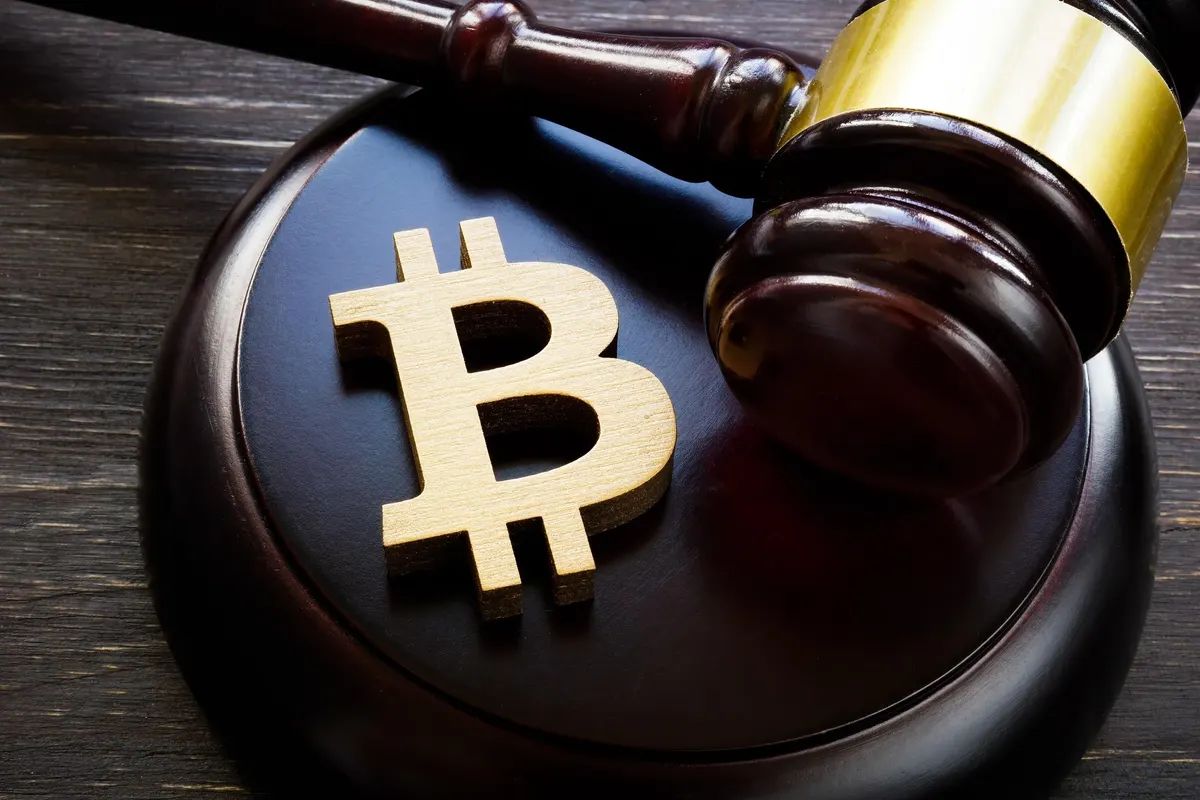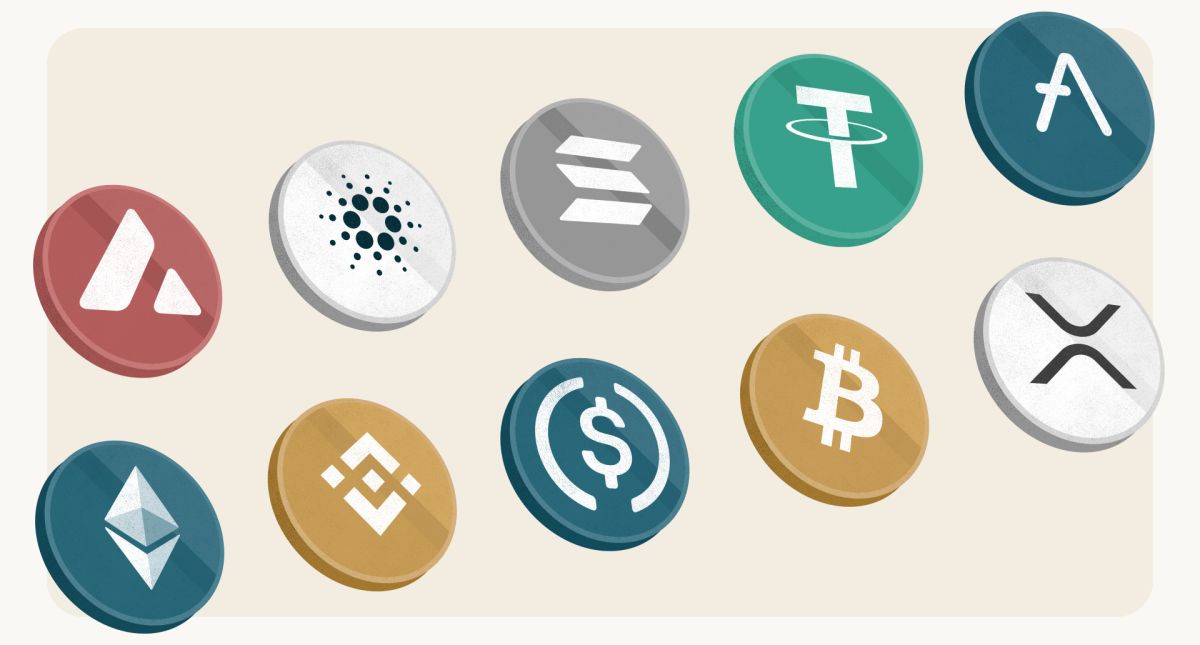Introduction
Blockchain technology has gained significant attention and potential across various industries. It is a decentralized and transparent system that allows the secure and efficient sharing of information and transactions. While blockchain offers numerous benefits, including increased security, lower costs, and enhanced transparency, it also raises concerns regarding regulation.
Blockchain, often associated with cryptocurrencies such as Bitcoin, operates on a distributed ledger system. It eliminates the need for intermediaries, such as banks or governments, by providing a transparent and tamper-proof record of transactions. This technology has the potential to revolutionize various sectors, including finance, supply chain management, healthcare, and more.
However, the decentralized nature of blockchain poses unique challenges for regulation. Traditional regulatory frameworks may struggle to keep up with the rapidly evolving blockchain technology. While many governments recognize the potential benefits of blockchain, they also aim to protect consumers, prevent fraud, and ensure compliance with existing laws.
Regulation is needed in the blockchain space to provide a level playing field for businesses and individuals, foster innovation, and safeguard against potential risks. It aims to strike a balance between facilitating the growth of blockchain technology and minimizing potential vulnerabilities.
In this article, we will explore the importance of regulating blockchain technology, the role of governments and financial institutions in implementing regulations, international efforts in standardizing blockchain regulations, and the emergence of self-regulatory organizations in the blockchain space.
As blockchain continues to disrupt multiple industries, understanding how it is regulated becomes crucial for both businesses and consumers. By establishing appropriate regulations, we can harness the full potential of blockchain while mitigating risks and maintaining trust in this transformative technology.
What is Blockchain?
Blockchain is a decentralized digital ledger that records transactions across multiple computers. It operates on a peer-to-peer network, where each computer (or node) maintains a copy of the ledger. Unlike traditional centralized systems, where a single entity controls the data, blockchain allows for transparency, immutability, and trust.
At its core, a blockchain is a chain of blocks, where each block contains a set of transactions. When a transaction occurs, it is added to a new block, which is then linked to the previous block, forming a chain. This chain of blocks serves as a permanent and verifiable record of all transactions.
One of the key features of blockchain is its decentralized nature. The distributed ledger ensures that no single entity has control over the entire system, eliminating the need for intermediaries. This peer-to-peer network allows for a more efficient and secure exchange of information and value.
Blockchain technology relies on cryptographic algorithms to secure the data. Each block contains a unique identifier called a hash, which is generated using the data in the block and the hash of the previous block. This creates a cryptographic link between the blocks, making it almost impossible to alter or tamper with the information.
Another important aspect of blockchain technology is its transparency. All participants in the network can view and verify the transactions stored on the ledger. This transparency promotes trust and accountability, as it becomes difficult to manipulate or falsify records.
With its decentralized and transparent nature, blockchain has the potential to revolutionize various industries. From financial transactions and supply chain management to voting systems and healthcare records, blockchain technology offers increased security, efficiency, and trust.
Overall, blockchain is a groundbreaking technology that enables secure and transparent transactions without the need for intermediaries. Its decentralized and cryptographic features make it a powerful tool for improving efficiency and trust in various sectors. As the adoption of blockchain continues to grow, it becomes crucial to establish appropriate regulations to harness its potential and address potential risks.
Why does Blockchain Need Regulation?
While blockchain technology offers numerous benefits, including increased security, efficiency, and transparency, it also presents unique challenges that necessitate regulation. Here are several reasons why blockchain requires appropriate regulatory frameworks:
Consumer Protection: As blockchain adoption expands, it is essential to safeguard consumers from potential risks. While blockchain offers enhanced security, it can still be vulnerable to hacking, scams, and fraud. Regulations can establish standards and protocols to protect consumers and ensure the responsible use of blockchain technology.
Legal Compliance: Existing laws and regulations, especially in areas such as finance, securities, and privacy, may not adequately address the complexities of blockchain technology. Regulations can provide clarity on how blockchain aligns with current legal frameworks and ensure compliance with reporting, taxation, and anti-money laundering requirements.
Preventing Illicit Activities: Blockchain’s anonymous and decentralized nature can also be exploited for illicit activities such as money laundering, terrorism financing, or illegal transactions. Regulation can serve to prevent such activities by implementing know-your-customer (KYC) and anti-money laundering (AML) measures, thereby maintaining the integrity of the blockchain ecosystem.
Market Stability: Blockchain-based assets, such as cryptocurrencies, are subject to significant price fluctuations due to their speculative nature. Regulation can help mitigate market manipulation and improve stability by introducing measures like insider trading regulations, market surveillance, and anti-fraud mechanisms.
Interoperability: As blockchain adoption grows, various blockchain networks may arise, each with its own protocols and standards. Interoperability between different blockchain platforms can be achieved through regulatory efforts, promoting seamless integrations and facilitating the exchange of assets and information among networks.
Data Privacy: Blockchain, by design, allows for the transparent and permanent storage of data. However, this feature raises concerns about individuals’ privacy and the protection of personal information. Regulation can establish guidelines for data privacy in blockchain applications, ensuring that sensitive information is appropriately protected.
Ethics and Governance: The use of blockchain technology raises ethical considerations, such as the potential concentration of power, governance models, and the impact on societal structures. Regulation can address these concerns, ensuring that blockchain technology is deployed in an ethical and responsible manner.
Overall, the regulation of blockchain technology is crucial to address potential risks, protect consumers, ensure legal compliance, and promote a fair and transparent environment. Regulations should strike a balance between fostering innovation and safeguarding against potential vulnerabilities. As blockchain continues to evolve, regulatory frameworks need to adapt and evolve alongside to support the sustainable growth and widespread adoption of this transformative technology.
Government Regulations on Blockchain
Governments around the world have recognized the importance of regulating blockchain technology to foster innovation, protect consumers, and ensure legal compliance. While the regulatory landscape varies across jurisdictions, several key areas of focus emerge:
Legal Frameworks: Governments are working to develop legal frameworks that address the unique challenges posed by blockchain technology. These frameworks aim to clarify the legal status of digital assets, establish rules for blockchain-based contracts, digital identity, and intellectual property rights. By providing legal certainty, governments can facilitate the growth of blockchain-based businesses.
Financial Regulations: Governments are also taking steps to regulate cryptocurrencies and initial coin offerings (ICOs) to protect investors and prevent financial crimes. Some countries have introduced licensing requirements for cryptocurrency exchanges, while others have implemented anti-money laundering (AML) and know-your-customer (KYC) regulations to mitigate the risk of illicit activities involving cryptocurrencies.
Consumer Protection: Governments play a crucial role in safeguarding consumers in the blockchain space. Regulatory measures are being introduced to combat fraud, ensure the accuracy of information in whitepapers, and protect consumers from misleading marketing practices. Some jurisdictions have established dispute resolution mechanisms to address conflicts related to blockchain-based transactions.
Data Privacy and Security: The decentralized and transparent nature of blockchain technology raises concerns regarding data privacy. Governments are enacting regulations to protect individuals’ personal information stored on the blockchain, in accordance with existing data protection laws. Measures include anonymization techniques, consent mechanisms, and restrictions on the processing of sensitive information.
Smart Contracts and Legal Recognition: Governments are exploring the legal recognition of smart contracts, which are self-executing contracts written on the blockchain. Regulations are being developed to address the enforceability of smart contracts, potential liabilities, and dispute resolution mechanisms. By providing legal clarity and certainty, governments can facilitate the adoption of smart contract technology.
Cross-border Transactions: Blockchain technology has the potential to streamline cross-border transactions, but regulatory challenges arise due to differences in laws and jurisdictions. Governments are working on harmonizing regulations to facilitate the use of blockchain for international transactions, addressing issues such as contract law, electronic signatures, and legal recognition of blockchain-based records.
Collaboration and Sandboxes: Recognizing the need for innovation-friendly environments, some governments have established regulatory sandboxes where blockchain startups can experiment and develop their products within a controlled framework. These sandboxes allow regulators to collaborate with industry stakeholders, gain insights, and adapt regulations based on real-world use cases.
Overall, government regulations on blockchain aim to strike a balance between encouraging innovation, protecting consumers, and ensuring legal compliance. Collaboration between governments, industry participants, and regulatory bodies is essential to develop comprehensive and adaptable regulatory frameworks that support the growth and responsible use of blockchain technology.
Financial Regulations on Blockchain
As blockchain technology continues to disrupt the financial industry, governments and regulatory bodies are implementing financial regulations to ensure the integrity, stability, and transparency of blockchain-based transactions. These regulations focus on several key areas:
Licensing and Registration: Many countries have introduced licensing and registration requirements for cryptocurrency exchanges and other blockchain-based financial service providers. These regulations aim to prevent money laundering, fraud, and protect consumers by ensuring that these entities operate within a regulated framework.
Anti-Money Laundering (AML) and Know Your Customer (KYC): AML and KYC regulations are critical in combating financial crimes and ensuring the legitimacy of blockchain-based transactions. Governments are implementing regulations that require cryptocurrency exchanges and other businesses in the blockchain space to conduct thorough customer due diligence, monitor transactions for suspicious activity, and report any suspicious transactions to regulatory authorities.
Investor Protection: Financial regulations on blockchain aim to protect investors by promoting transparency and mitigating the risks associated with initial coin offerings (ICOs) and cryptocurrency investments. Governments are introducing measures such as mandatory disclosure of information, investor suitability assessments, and restrictions on the sale of certain types of digital assets to retail investors.
Market Surveillance and Manipulation Prevention: Financial regulators are implementing measures to detect and prevent market manipulation, fraud, and insider trading in the blockchain space. These regulations require exchanges and trading platforms to implement surveillance systems to monitor trading activities, report suspicious transactions, and enforce penalties for violators.
Reporting and Compliance: Financial regulations on blockchain require businesses to adhere to reporting and compliance standards. This includes regular reporting of financial statements, audits, capital adequacy requirements, and compliance with taxation regulations. By ensuring proper reporting and compliance, regulators aim to maintain the stability and transparency of the financial ecosystem.
Cross-Border Transactions: In the realm of cross-border transactions, financial regulations play a crucial role in facilitating international payments and compliance with foreign exchange regulations. Governments are working to develop regulations that address the complexities of blockchain-based cross-border transactions, including issues related to jurisdiction, legal recognition, and settlement processes.
Stablecoins and Central Bank Digital Currencies (CBDCs): With the emergence of stablecoins and central bank digital currencies, financial regulators are assessing the regulatory frameworks required for these digital assets. They aim to ensure that stablecoins maintain their peg to a specific asset and adhere to regulatory requirements, while also exploring the potential benefits and risks associated with CBDCs.
Overall, financial regulations on blockchain aim to foster innovation, protect investors, and maintain the integrity of the financial system. By providing clear guidelines and standards, regulators are working towards a balanced approach that encourages the growth of blockchain technology while mitigating risks and safeguarding the interests of consumers and the wider financial market.
International Regulations on Blockchain
The global nature of blockchain technology has prompted the need for international cooperation and harmonization of regulations. While regulatory approaches may vary across jurisdictions, efforts are being made to establish international standards and guidelines for blockchain technology. Here are several key aspects of international regulations on blockchain:
Standardization: International organizations and standard-setting bodies are working towards establishing common standards for blockchain technology. These standards cover areas such as data privacy, interoperability, security, and smart contracts. Standardization efforts aim to promote compatibility, interoperability, and the seamless integration of blockchain systems across borders.
International Financial Regulations: Financial regulators are collaborating internationally to address the challenges posed by blockchain-based financial transactions. Forums and organizations, such as the Financial Action Task Force (FATF), work towards setting global AML and counter-terrorist financing standards for cryptocurrencies. These efforts aim to prevent illicit financial activities while ensuring transparency and accountability in cross-border blockchain transactions.
Data Privacy and Cross-Border Data Transfer: The cross-border nature of blockchain technology raises concerns about data privacy and the transfer of personal information. International regulations, such as the European Union’s General Data Protection Regulation (GDPR), establish principles and requirements for the transfer and protection of personal data. Efforts are being made to find a balance between the benefits of blockchain technology and the protection of individuals’ data privacy rights.
International Trade and Supply Chain: The use of blockchain technology in international trade and supply chain management has prompted the need for harmonized regulations. Organizations such as the World Trade Organization (WTO) are exploring how blockchain can facilitate trade digitization, simplify customs procedures, and enhance supply chain transparency. International regulations aim to provide guidelines for the adoption and integration of blockchain in global trade scenarios.
AML and KYC Cooperation: Multinational efforts are underway to enhance international cooperation in combating money laundering and terrorist financing facilitated by blockchain technology. Financial intelligence units and regulatory bodies are sharing information and best practices to identify and track illicit transactions across borders. Collaborative efforts aim to establish a robust framework to prevent and deter financial crimes associated with blockchain.
International Intellectual Property Protection: Intellectual property rights are a crucial aspect of blockchain-based innovations. International agreements and organizations, such as WIPO (World Intellectual Property Organization), work towards harmonizing patent and copyright regulations to protect blockchain-related intellectual property globally. These efforts encourage innovation and provide legal certainty for creators in the blockchain space.
International regulations on blockchain strive to foster cooperation, share best practices, and establish common frameworks that promote innovation, protect consumers, and facilitate cross-border transactions. As the global nature of blockchain technology continues to evolve, international collaboration and standardization efforts will play a crucial role in shaping the regulatory landscape and harnessing the full potential of blockchain technology.
Self-regulatory Organizations in Blockchain
As the blockchain industry continues to grow and mature, self-regulatory organizations have emerged to address the unique challenges and needs of the blockchain ecosystem. These organizations are driven by industry participants and aim to establish best practices, standards, and guidelines to promote transparency, compliance, and responsible behavior. Here are several key aspects of self-regulatory organizations in the blockchain space:
Codes of Conduct: Self-regulatory organizations develop and enforce codes of conduct that outline the ethical standards and behaviors expected of participants in the blockchain industry. These codes help maintain trust among users, regulate business practices, and ensure fair competition.
Membership and Compliance: Participants in the blockchain industry, including exchanges, service providers, and developers, have the option to become members of self-regulatory organizations. Membership often comes with certain obligations, including compliance with established standards, ongoing audits, and reporting requirements.
Consumer Protection: Self-regulatory organizations in the blockchain space prioritize consumer protection by establishing guidelines and best practices that protect users’ interests. This includes ensuring secure custody of funds, verifying the accuracy of information provided to users, and addressing concerns related to fraud, scams, and data privacy.
Dispute Resolution: Self-regulatory organizations may provide mechanisms for dispute resolution between participants and users of blockchain platforms. These organizations can act as impartial arbiters, helping to resolve conflicts and disputes in a fair and efficient manner.
Education and Awareness: Self-regulatory organizations play a crucial role in educating industry participants and the broader public on blockchain technology, its benefits, and potential risks. They provide educational resources, conduct awareness campaigns, and facilitate knowledge sharing to promote responsible use and adoption of blockchain technology.
Government Collaboration: Self-regulatory organizations often work in collaboration with governments and regulators to develop standards and guidelines that align with existing regulatory frameworks. This collaboration helps bridge the gap between industry practices and regulatory requirements, ensuring a smoother adoption and implementation of regulations.
Innovation and Industry Representation: Self-regulatory organizations strive to foster innovation within the blockchain industry by providing a platform for industry participants to collaborate, share insights, and propose industry-specific solutions. These organizations also represent the interests of the industry to policymakers and regulatory bodies, advocating for regulatory frameworks that support innovation while addressing potential risks.
By self-regulating and setting industry standards, self-regulatory organizations in the blockchain space aim to create a more transparent, accountable, and sustainable ecosystem. While they do not replace government regulations, they act as a complementary layer of oversight that caters to the unique characteristics and challenges of the blockchain industry.
Challenges in Regulating Blockchain
Regulating blockchain technology presents unique challenges due to its decentralized, transparent, and rapidly evolving nature. These challenges include:
Global Jurisdiction: Blockchain operates on a global scale, posing challenges for regulators who traditionally operate within specific jurisdictions. Determining which jurisdiction has authority over blockchain transactions can be complex, especially when multiple jurisdictions are involved.
Regulatory Lag: The rapid pace of technological advancements in blockchain often outpaces the development of regulations. Regulators are faced with the challenge of keeping up with evolving blockchain technology to ensure appropriate oversight without stifling innovation.
Anonymity and Privacy: Blockchain’s transparent nature can conflict with privacy concerns, especially when it comes to personal or sensitive data. Striking a balance between transparency and protecting individuals’ privacy is a challenge regulators must navigate.
Regulating Decentralization: The decentralized nature of blockchain technology challenges traditional regulatory frameworks that rely on centralized entities. Regulators need to find ways to enforce regulations while respecting the decentralized nature of blockchain networks.
Cross-Border Transactions: Blockchain’s global reach enables cross-border transactions, making it difficult for regulators to ensure consistent oversight and enforcement across multiple jurisdictions. Harmonizing regulations internationally poses a significant challenge.
Regulating Smart Contracts: Smart contracts, which are self-executing contracts running on blockchain, bring legal complexities. Regulators must determine how to enforce traditional legal principles in this automated and decentralized environment.
Technological Barriers: Regulators may face technical challenges in understanding and verifying the accuracy of blockchain transactions. Developing the expertise to analyze and monitor blockchain networks can be resource-intensive for regulatory agencies.
Industry Collaboration: Blockchain technology spans across diverse industries, such as finance, supply chain, healthcare, and more. Coordinating and collaborating with different sectors to establish coherent regulatory frameworks poses a challenge for regulators.
Potential Over-Regulation: Over-regulation can stifle innovation and limit the potential benefits of blockchain technology. Striking the right balance between regulation and fostering innovation is a challenge for regulators, as they must promote growth while safeguarding against risks.
Regulatory Arbitrage: The global nature of blockchain technology can lead to regulatory arbitrage, where entities choose to operate in jurisdictions with more favorable regulations. This can create gaps in oversight and enforcement, requiring regulators to address these issues collectively.
Addressing these challenges requires collaboration between regulators, industry participants, and international organizations. Regular dialogues, continuous learning, and flexibility in regulatory approaches are essential to effectively navigate the complexities of regulating blockchain technology while fostering innovation and protecting consumer interests.
Conclusion
As blockchain technology continues to revolutionize various industries, the need for appropriate regulation becomes crucial. Blockchain offers numerous advantages, such as increased security, transparency, and efficiency, but it also presents unique challenges that require careful oversight. Government regulations play a vital role in protecting consumers, ensuring legal compliance, and maintaining market stability. Financial regulations are specifically tailored to address the complexities of blockchain-based financial transactions, safeguarding investors and preventing financial crimes. International regulations and standardization efforts help establish common frameworks and guidelines, promoting cross-border transactions and collaboration. In parallel, self-regulatory organizations contribute to maintaining ethical standards, protecting consumers, and fostering innovation within the blockchain ecosystem. However, regulating blockchain technology is not without challenges, from global jurisdictional issues to accommodating the decentralized and rapidly evolving nature of blockchain networks. These challenges highlight the importance of collaboration, continuous learning, and flexibility in regulatory approaches. By striking a balance between regulation and innovation, we can leverage the full potential of blockchain technology while mitigating risks and fostering a sustainable and responsible blockchain ecosystem.

























